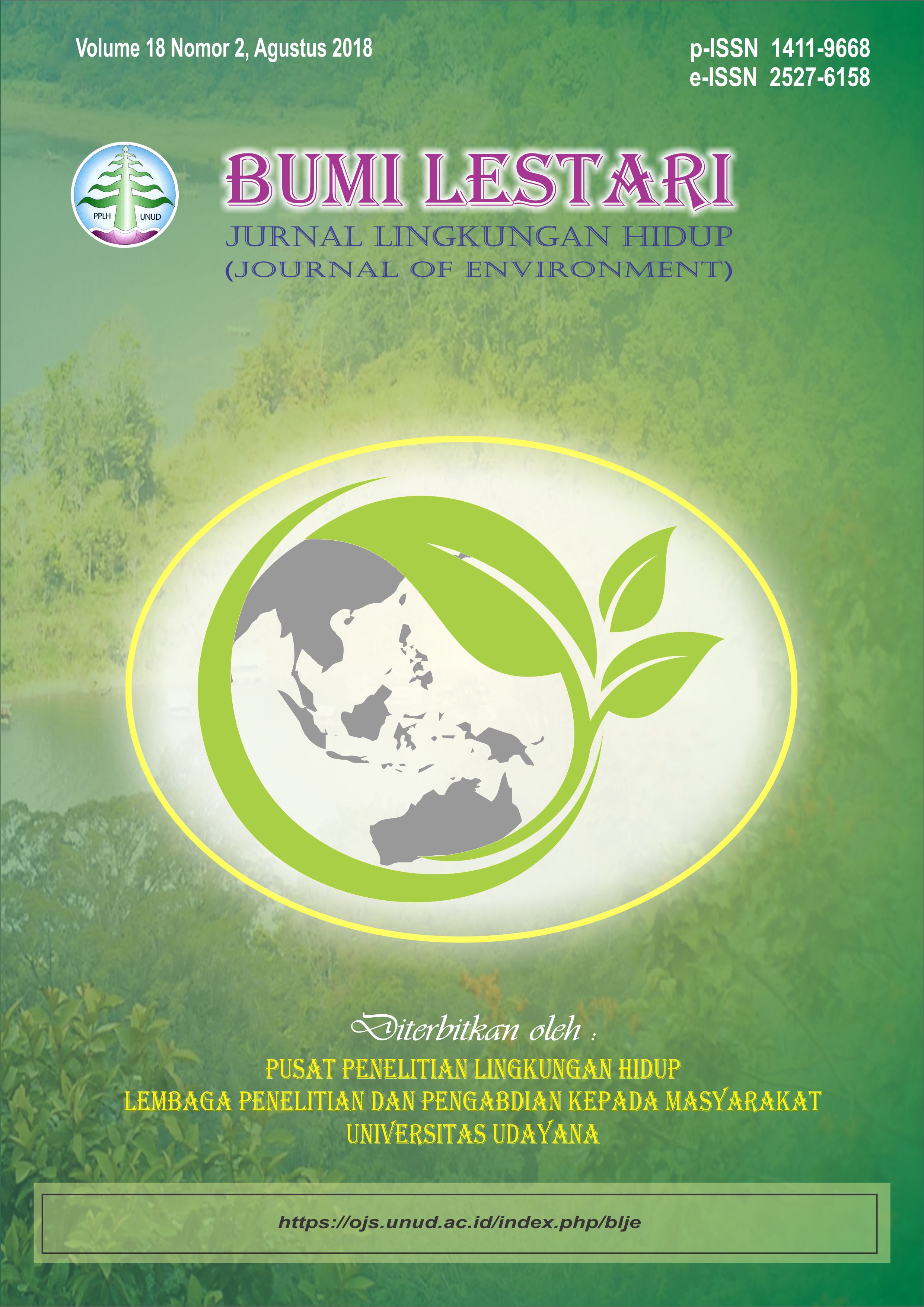Daya Dukung Padang Lamun Di Kawasan Wisata Pulau Pari, Kepulauan Seribu
Abstract
This research was conducted using carrying capacity analysis method. The purpose of this research was to analyze the seagrass condition and the carrying capacity of seagrass tourism development in Pari Island. Quantitative method is used to reach the research purpose. The result showed that seagrass species found were Halodule ophalis, Cymodocea rottundata, Enhalus acoroides, dan Thalassia hemprichii. Seagrass’ coverage and density at Bintang Beach were recorded as 59.83% and 76 ind/m2 respectively, 47.56% and 54 ind/m2 at Kresek Beach, and 16.61% and 9 ind/m2 at Pasir Perawan Beach. Diversity index of seagrass in Pari Island was 1,199, categorized as moderate condition. The carrying capacity score for seagrass as tourism object in Pari Island in ecological aspect were 94 tourists/day for Bintang Beach, 59 tourists/day for Kresek Beach, and 58 tourists/day for Pasir Perawan Beach. Based on social aspect, local people of Pari Island were mostly welcome the tourists, and the tourists were quite not satisfied with the tourism objects. In economic aspect, tourism activities increase local peoples’ income.
Downloads
Authors who publish with this journal agree to the following terms:
- All articles published by Bumi Lestari Journal of Environment and Environmental Reseach Center Udayana University are made available under an open access license worldwide immediately. This means everyone has free and unlimited access to the full-text of all articles published in Bumi Lestari Journal of Environment, and everyone is free to re-use the published material given proper accreditation/citation of the original publication. Open access publication is supported by authors' institutes or research funding agency by payment of a comparatively article processing charge for accepted articles (See Author Fees). Bumi Lestari Journal of Environment and Environmental Reseach Center Udayana University publish articles under the Creative Commons Attribution License.
- Authors are able to enter into separate, additional contractual arrangements for the non-exclusive distribution of the journal's published version of the work (e.g., post it to an institutional repository or publish it in a book), with an acknowledgement of its initial publication in this journal.
- Authors are permitted and encouraged to post their work online (e.g., in institutional repositories or on their website) prior to and during the submission process, as it can lead to productive exchanges, as well as earlier and greater citation of published work (See The Effect of Open Access).





